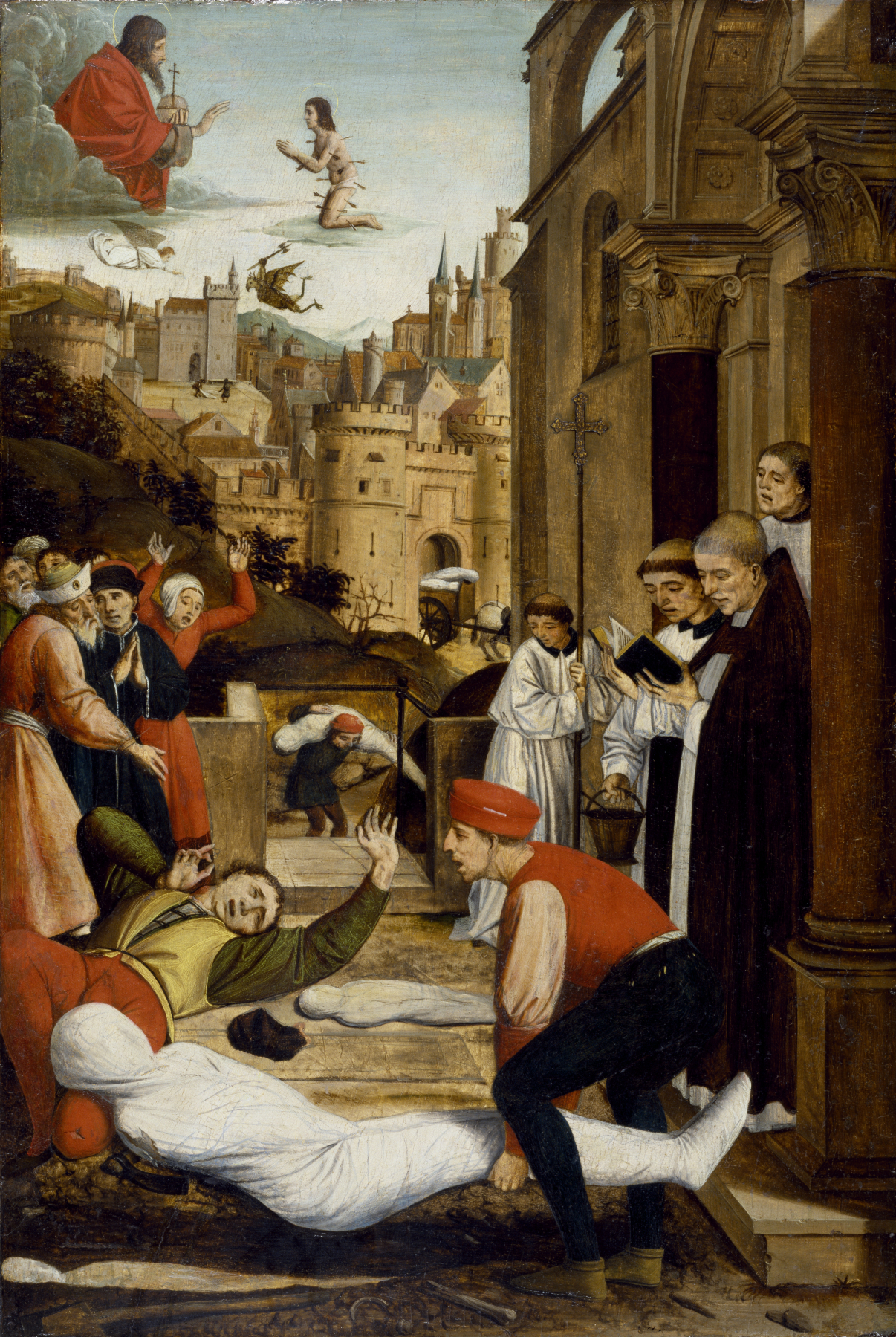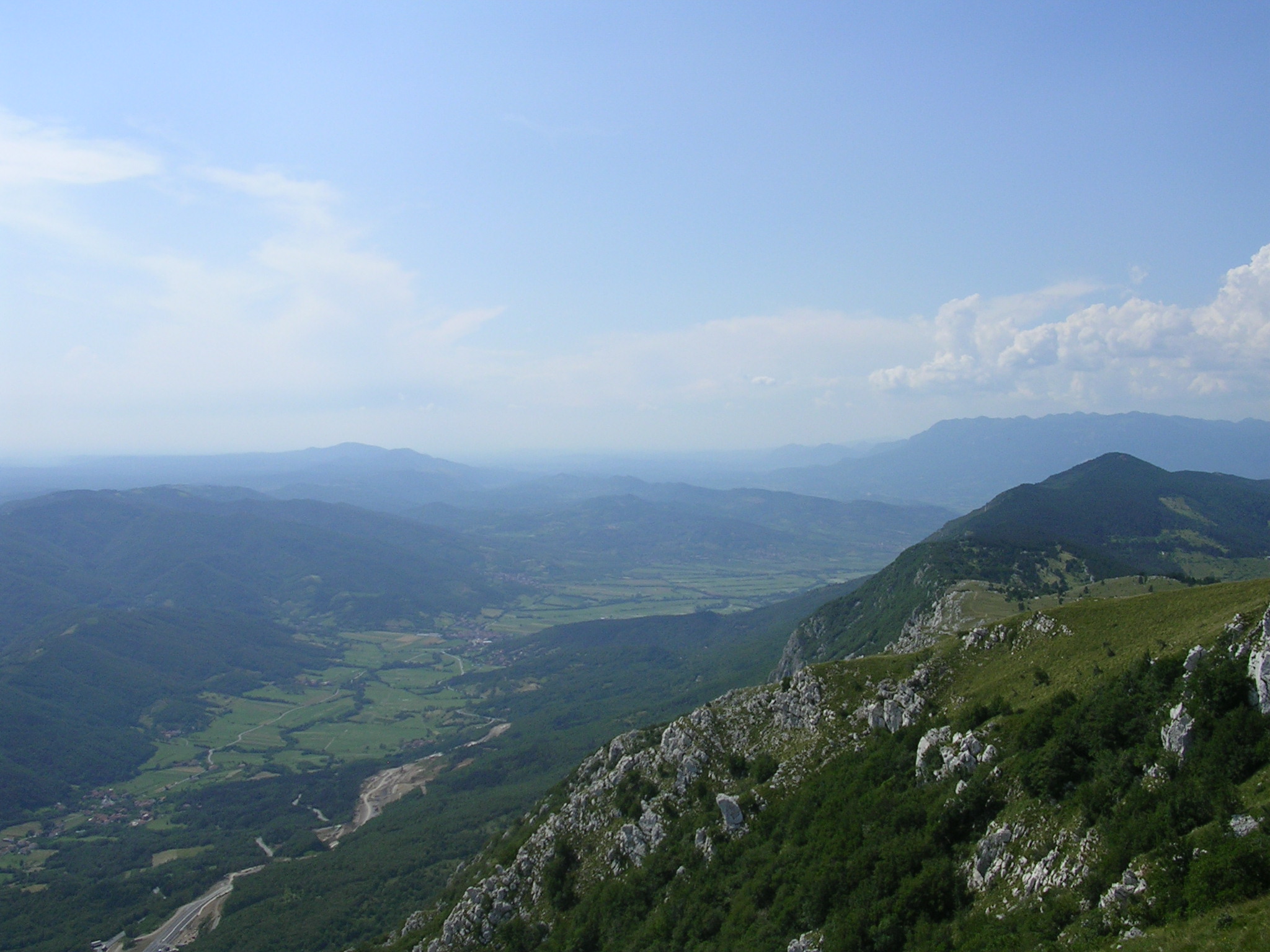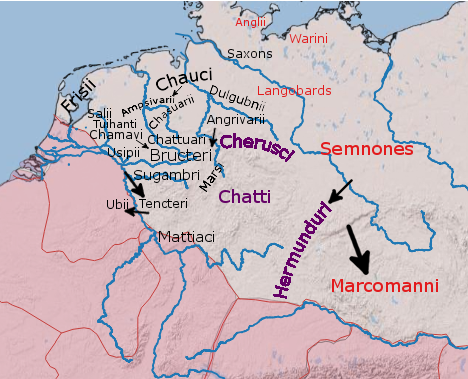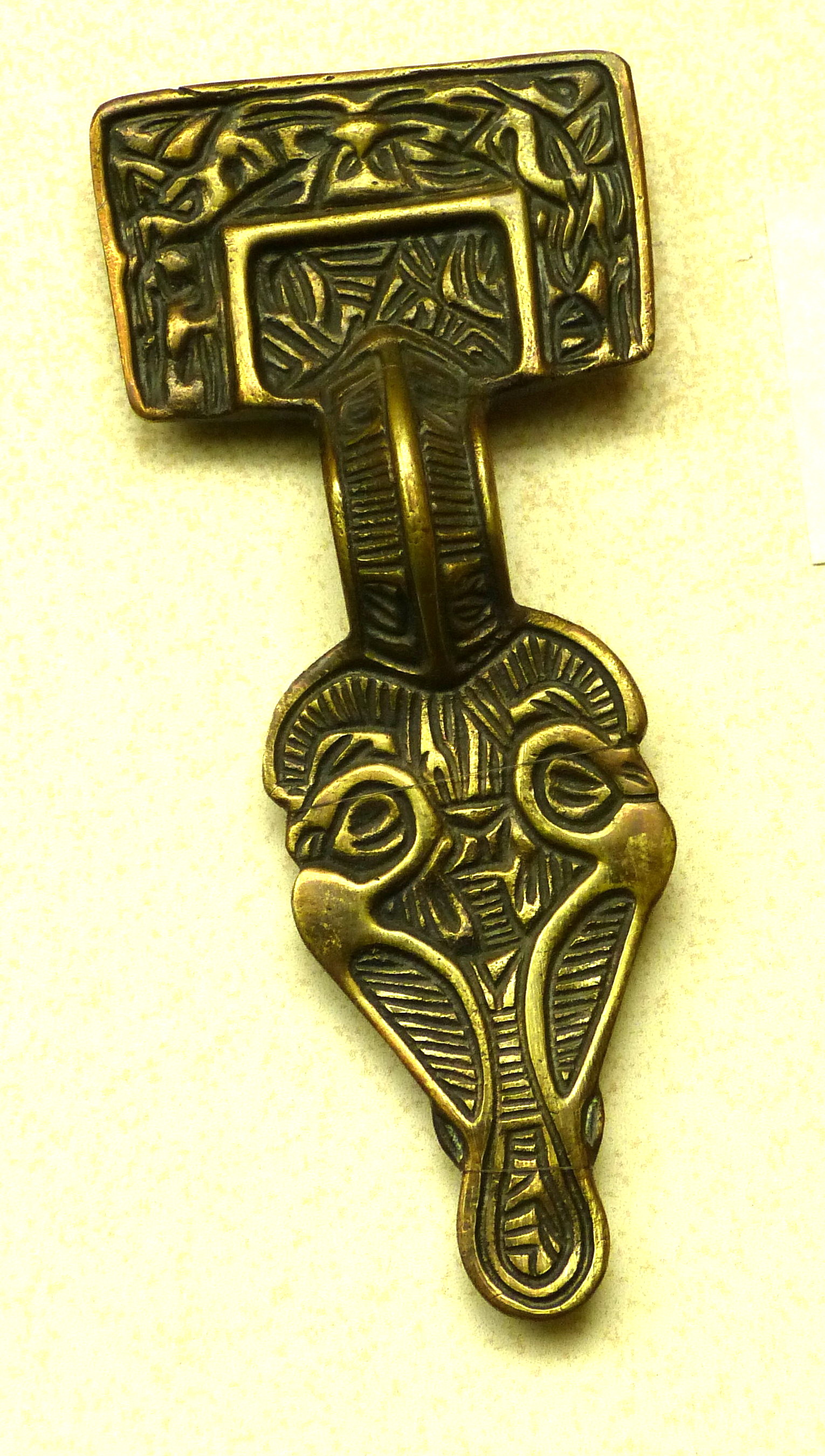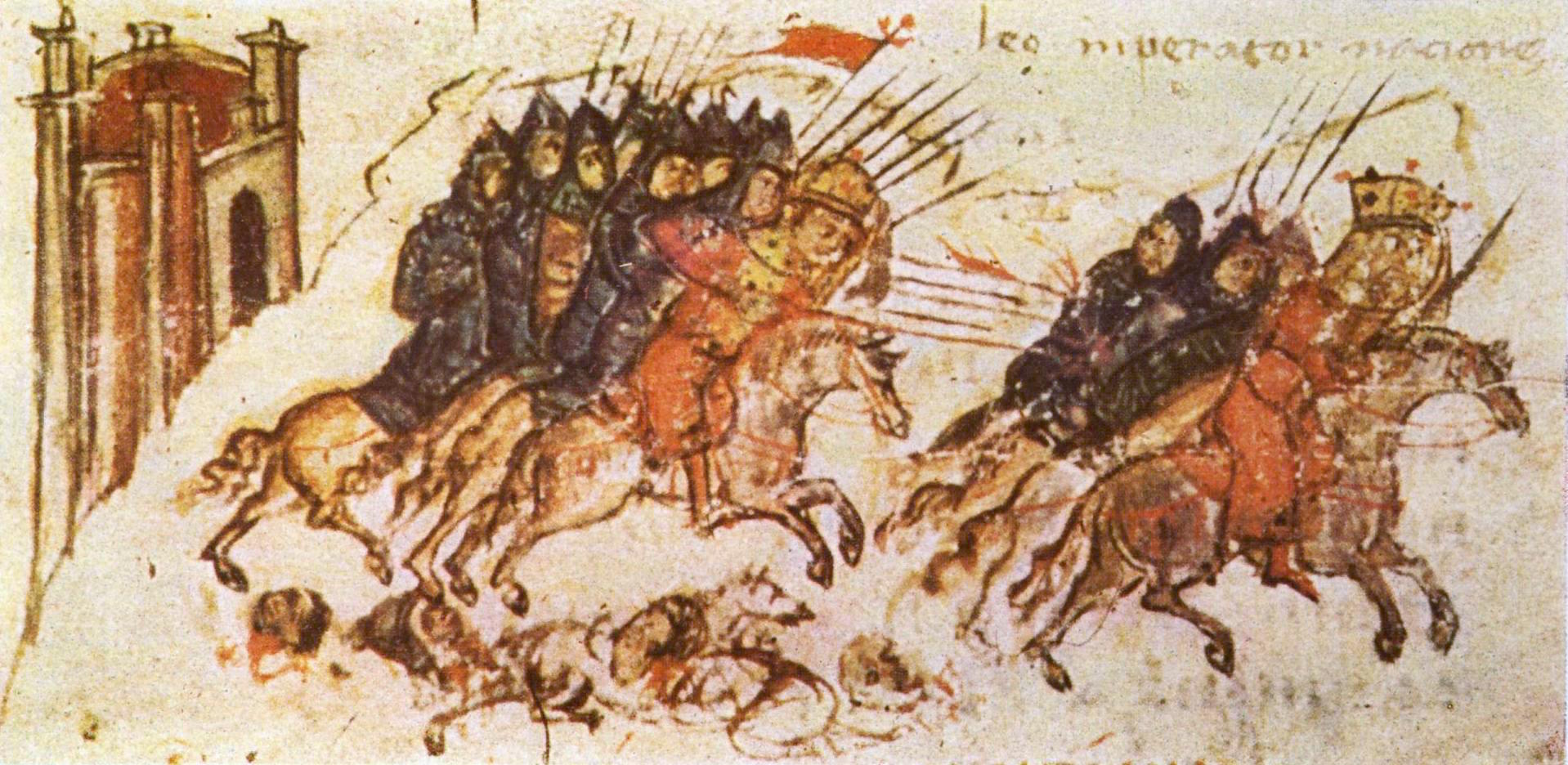|
Longobard
The Lombards () or Langobards ( la, Langobardi) were a Germanic peoples, Germanic people who ruled most of the Italian Peninsula from 568 to 774. The medieval Lombard historian Paul the Deacon wrote in the ''History of the Lombards'' (written between 787 and 796) that the Lombards descended from a small tribe called the Winnili,: "From Proto-Germanic language, Proto-Germanic ''wikt:Reconstruction:Proto-Germanic/winnaną, winna-'', meaning "to fight, win" who dwelt in southern Scandinavia (''Scadanan'') before migrating to seek new lands. By the time of the Roman-era - historians wrote of the Lombards in the 1st century AD, as being one of the Suebian peoples, in what is now northern Germany, near the Elbe river. They continued to migrate south. By the end of the fifth century, the Lombards had moved into the area roughly coinciding with modern Austria and Slovakia north of the Danube, where they subdued the Heruls and later fought frequent wars with the Gepids. The Lombard king ... [...More Info...] [...Related Items...] OR: [Wikipedia] [Google] [Baidu] |
Kingdom Of The Lombards
The Kingdom of the Lombards ( la, Regnum Langobardorum; it, Regno dei Longobardi; lmo, Regn di Lombard) also known as the Lombard Kingdom; later the Kingdom of (all) Italy ( la, Regnum totius Italiae), was an early medieval state established by the Lombards, a Germanic people, on the Italian Peninsula in the latter part of the 6th century. The king was traditionally elected by the very highest-ranking aristocrats, the dukes, as several attempts to establish a hereditary dynasty failed. The kingdom was subdivided into a varying number of duchies, ruled by semi-autonomous dukes, which were in turn subdivided into gastaldates at the municipal level. The capital of the kingdom and the center of its political life was Pavia in the modern northern Italian region of Lombardy. The Lombard invasion of Italy was opposed by the Byzantine Empire, which retained control of much of the peninsula until the mid-8th century. For most of the kingdom's history, the Byzantine-ruled Exarcha ... [...More Info...] [...Related Items...] OR: [Wikipedia] [Google] [Baidu] |
Lombardy
(man), (woman) lmo, lumbard, links=no (man), (woman) , population_note = , population_blank1_title = , population_blank1 = , demographics_type1 = , demographics1_footnotes = , demographics1_title1 = , demographics1_info1 = , demographics1_title2 = , demographics1_info2 = , demographics1_title3 = , demographics1_info3 = , timezone1 = CET , utc_offset1 = +1 , timezone1_DST = CEST , utc_offset1_DST = +2 , postal_code_type = , postal_code = , area_code_type = ISO 3166 code , area_code = IT-25 , blank_name_sec1 = GDP (PPS) , blank_info_sec1 = €401 billion (2019) , blank1_name_sec1 = GDP per capita , blank1_info_sec1 = €39,700 (2019) $51,666 (2016) (PPP) , blank2_name_sec1 = HDI (2019) , blank2_info_sec1 = 0.912 · 4th of 21 , blank_name_sec2 ... [...More Info...] [...Related Items...] OR: [Wikipedia] [Google] [Baidu] |
Pavia
Pavia (, , , ; la, Ticinum; Medieval Latin: ) is a town and comune of south-western Lombardy in northern Italy, south of Milan on the lower Ticino river near its confluence with the Po. It has a population of c. 73,086. The city was the capital of the Ostrogothic Kingdom from 540 to 553, of the Kingdom of the Lombards from 572 to 774, of the Kingdom of Italy from 774 to 1024 and seat of the Visconti court from 1365 to 1413. Pavia is the capital of the fertile province of Pavia, which is known for a variety of agricultural products, including wine, rice, cereals, and dairy products. Although there are a number of industries located in the suburbs, these tend not to disturb the peaceful atmosphere of the town. It is home to the ancient University of Pavia (founded in 1361 and recognized in 2022 by the Times Higher Education among the top 10 in Italy and among the 300 best in the world), which together with the IUSS (Institute for Advanced Studies of Pavia), Ghislier ... [...More Info...] [...Related Items...] OR: [Wikipedia] [Google] [Baidu] |
Alboin
Alboin (530s – 28 June 572) was king of the Lombards from about 560 until 572. During his reign the Lombards ended their migrations by settling in Italy, the northern part of which Alboin conquered between 569 and 572. He had a lasting effect on Italy and the Pannonian Basin; in the former his invasion marked the beginning of centuries of Lombard rule, and in the latter his defeat of the Gepids and his departure from Pannonia ended the dominance there of the Germanic peoples. The period of Alboin's reign as king in Pannonia following the death of his father, Audoin, was one of confrontation and conflict between the Lombards and their main neighbors, the Gepids. The Gepids initially gained the upper hand, but in 567, thanks to his alliance with the Avars, Alboin inflicted a decisive defeat on his enemies, whose lands the Avars subsequently occupied. The increasing power of his new neighbours caused Alboin some unease however, and he therefore decided to leave Pannonia for ... [...More Info...] [...Related Items...] OR: [Wikipedia] [Google] [Baidu] |
History Of The Lombards
The ''History of the Lombards'' or the ''History of the Langobards'' ( la, Historia Langobardorum) is the chief work by Paul the Deacon, written in the late 8th century. This incomplete history in six books was written after 787 and at any rate no later than 796, maybe at Montecassino. The history covers the story of the Lombards from their mythical origins to the death of King Liutprand in 743, and contains much information about the Eastern Roman empire, the Franks, and others. The story is told from the point of view of a Lombard patriot and is especially valuable for its treatment of the relations between the Franks and the Lombards. As his primary sources, Paul used the document called the '' Origo gentis Langobardorum'', the ''Liber pontificalis'', the lost history of Secundus of Trent, and the lost annals of Benevento; he also made free use of works by Bede, Gregory of Tours, and Isidore of Seville. Editions According to a study made by Laura Pani in 2000, there are 11 ... [...More Info...] [...Related Items...] OR: [Wikipedia] [Google] [Baidu] |
Thurisind
Thurisind (Latin: ''Turisindus'', died ) was king of the Gepids, an East Germanic Gothic people, from c. 548 to 560. He was the penultimate Gepid king, and succeeded King Elemund by staging a coup d'état and forcing the king's son into exile. Thurisind's kingdom, known as Gepidia, was located in Central Europe and had its centre in Sirmium, a former Roman city on the Sava River (now the town of Sremska Mitrovica, Serbia). His reign was marked by multiple wars with the Lombards, a Germanic people who had arrived in the former Roman province of Pannonia under the leadership of their king, Audoin. Thurisind also had to face the hostility of the Byzantine Empire, which was resentful of the Gepid takeover of Sirmium and anxious to diminish Gepid power in the Pannonian Basin, a plain covering most of modern Hungary and partly including the bordering states. The Byzantines' plans to reduce the Gepids' power took effect when Audoin decisively defeated Thurisind in 551 or 552. The Byzant ... [...More Info...] [...Related Items...] OR: [Wikipedia] [Google] [Baidu] |
Heruls
The Heruli (or Herules) were an early Germanic people. Possibly originating in Scandinavia, the Heruli are first mentioned by Roman authors as one of several "Scythian" groups raiding Roman provinces in the Balkans and the Aegean Sea, attacking by land, and notably also by sea. During this time they reportedly lived near the Sea of Azov. From the late 4th century AD the Heruli were one of the peoples that were brought into the fold of the Hunnic Confederation of Attila. By 454, after the death of Attila, they established their own kingdom on the Middle Danube, and Heruli also participated in successive conquests of Italy by Odoacer, Theoderic the Great, Narses and probably also the Longobards. However, their independent kingdom was destroyed by the Longobards by the early 6th century AD. A part of this population subsequently became established inside the Roman empire near Belgrade, and continued contributing fighting men to the Eastern Roman Empire, and participating in Balkan an ... [...More Info...] [...Related Items...] OR: [Wikipedia] [Google] [Baidu] |
Heruli
The Heruli (or Herules) were an early Germanic people. Possibly originating in Scandinavia, the Heruli are first mentioned by Roman authors as one of several " Scythian" groups raiding Roman provinces in the Balkans and the Aegean Sea, attacking by land, and notably also by sea. During this time they reportedly lived near the Sea of Azov. From the late 4th century AD the Heruli were one of the peoples that were brought into the fold of the Hunnic Confederation of Attila. By 454, after the death of Attila, they established their own kingdom on the Middle Danube, and Heruli also participated in successive conquests of Italy by Odoacer, Theoderic the Great, Narses and probably also the Longobards. However, their independent kingdom was destroyed by the Longobards by the early 6th century AD. A part of this population subsequently became established inside the Roman empire near Belgrade, and continued contributing fighting men to the Eastern Roman Empire, and participating in ... [...More Info...] [...Related Items...] OR: [Wikipedia] [Google] [Baidu] |
Suebi
The Suebi (or Suebians, also spelled Suevi, Suavi) were a large group of Germanic peoples originally from the Elbe river region in what is now Germany and the Czech Republic. In the early Roman era they included many peoples with their own names such as the Marcomanni, Quadi, Hermunduri, Semnones, and Lombards. New groupings formed later, such as the Alamanni and Bavarians, and two kingdoms in the Migration Period were simply referred to as Suebian. Although Tacitus specified that the Suebian group was not an old tribal group itself, the Suebian peoples are associated by Pliny the Elder with the Irminones, a grouping of Germanic peoples who claimed ancestral connections. Tacitus mentions Suebian languages, and a geographical "Suevia". The Suevians were first mentioned by Julius Caesar in connection with the invasion of Gaul by the Germanic king Ariovistus during the Gallic Wars. Unlike Tacitus he described them as a single people, distinct from the Marcomanni, within t ... [...More Info...] [...Related Items...] OR: [Wikipedia] [Google] [Baidu] |
Thuringians
The Thuringii, Toringi or Teuriochaimai, were an early Germanic people that appeared during the late Migration Period in the Harz Mountains of central Germania, a region still known today as Thuringia. It became a kingdom, which came into conflict with the Merovingian Franks, and it later came under their influence and Frankish control. The name is still used for one of modern Germany's federal states ('' Bundesländer''). First appearances The Thuringians do not appear in classical Roman texts under that name, but some have suggested that they were the remnants of the Suebic Hermanduri, the last part of whose name (''-duri'') could represent the same sound as (''-thuri'') and the Germanic suffix ''-ing'', suggests a meaning of "descendants of (the ermanuri)". This people were living near the Marcomanni. Tacitus in his "''Germania''", describes their homeland as being where the Elbe starts, but also having colonies at the Danube and even within the Roman province of Rhaetia ... [...More Info...] [...Related Items...] OR: [Wikipedia] [Google] [Baidu] |
Bulgars
The Bulgars (also Bulghars, Bulgari, Bolgars, Bolghars, Bolgari, Proto-Bulgarians) were Turkic semi-nomadic warrior tribes that flourished in the Pontic–Caspian steppe and the Volga region during the 7th century. They became known as nomadic equestrians in the Volga-Ural region, but some researchers say that their ethnic roots can be traced to Central Asia. During their westward migration across the Eurasian steppe, the Bulgar tribes absorbed other tribal groups and cultural influences in a process of ethnogenesis, including Iranian, Finnic and Hunnic tribes. Modern genetic research on Central Asian Turkic people and ethnic groups related to the Bulgars points to an affiliation with Western Eurasian populations. The Bulgars spoke a Turkic language, i.e. Bulgar language of Oghuric branch. They preserved the military titles, organization and customs of Eurasian steppes, as well as pagan shamanism and belief in the sky deity Tangra. The Bulgars became semi-sedentary du ... [...More Info...] [...Related Items...] OR: [Wikipedia] [Google] [Baidu] |
Ostrogoths
The Ostrogoths ( la, Ostrogothi, Austrogothi) were a Roman-era Germanic people. In the 5th century, they followed the Visigoths in creating one of the two great Gothic kingdoms within the Roman Empire, based upon the large Gothic populations who had settled in the Balkans in the 4th century, having crossed the Lower Danube. While the Visigoths had formed under the leadership of Alaric I, the new Ostrogothic political entity which came to rule Italy was formed in the Balkans under the influence of the Amal dynasty, the family of Theodoric the Great. After the death of Attila and collapse of the Hunnic empire represented by the Battle of Nedao in 453, the Amal family began to form their kingdom in Pannonia. Byzantine Emperor Zeno played these Pannonian Goths off against the Thracian Goths, but instead the two groups united after the death of the Thracian leader Theoderic Strabo and his son Recitach. Zeno then backed Theodoric to invade Italy and replace Odoacer there, whom he h ... [...More Info...] [...Related Items...] OR: [Wikipedia] [Google] [Baidu] |


